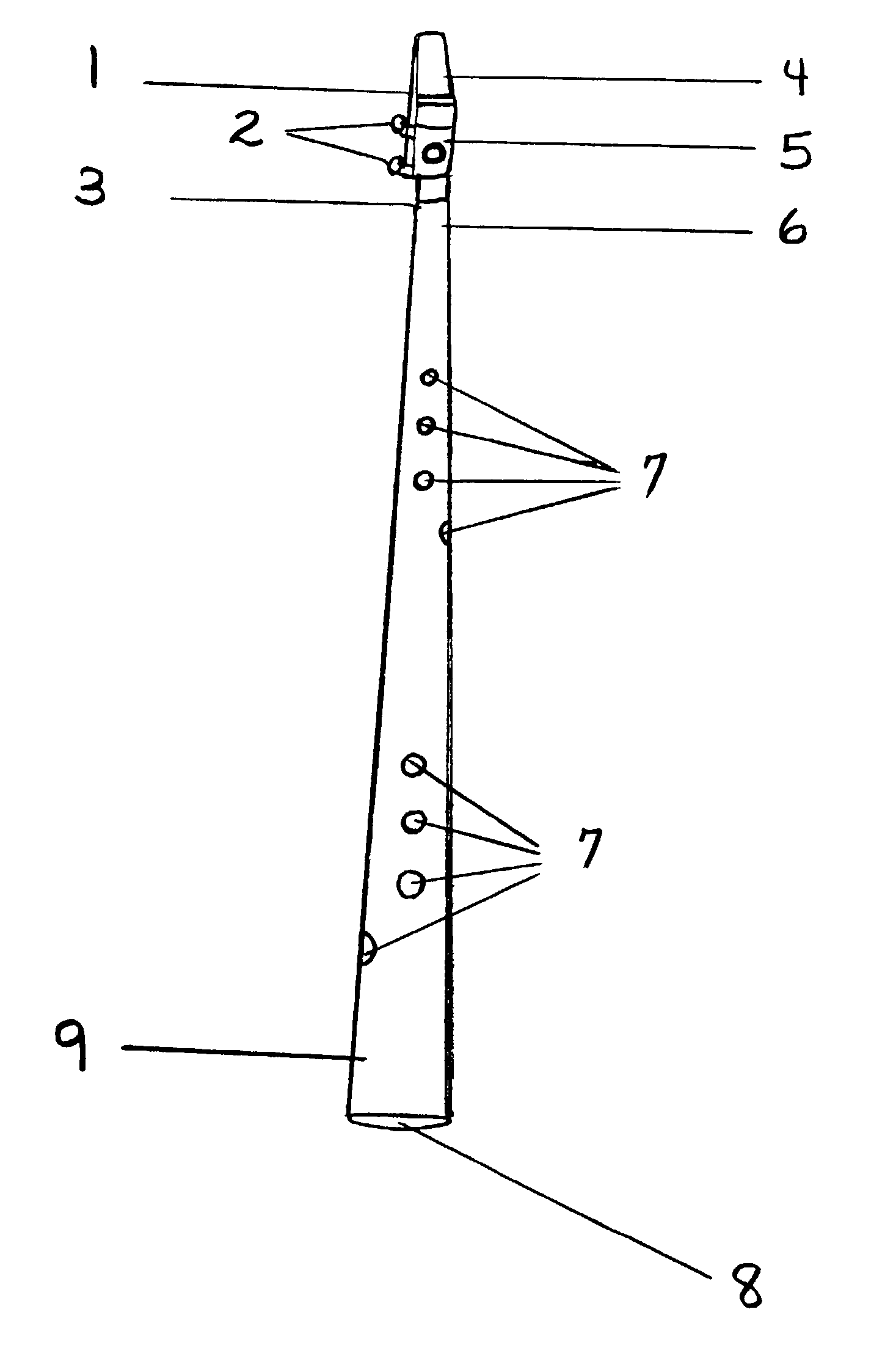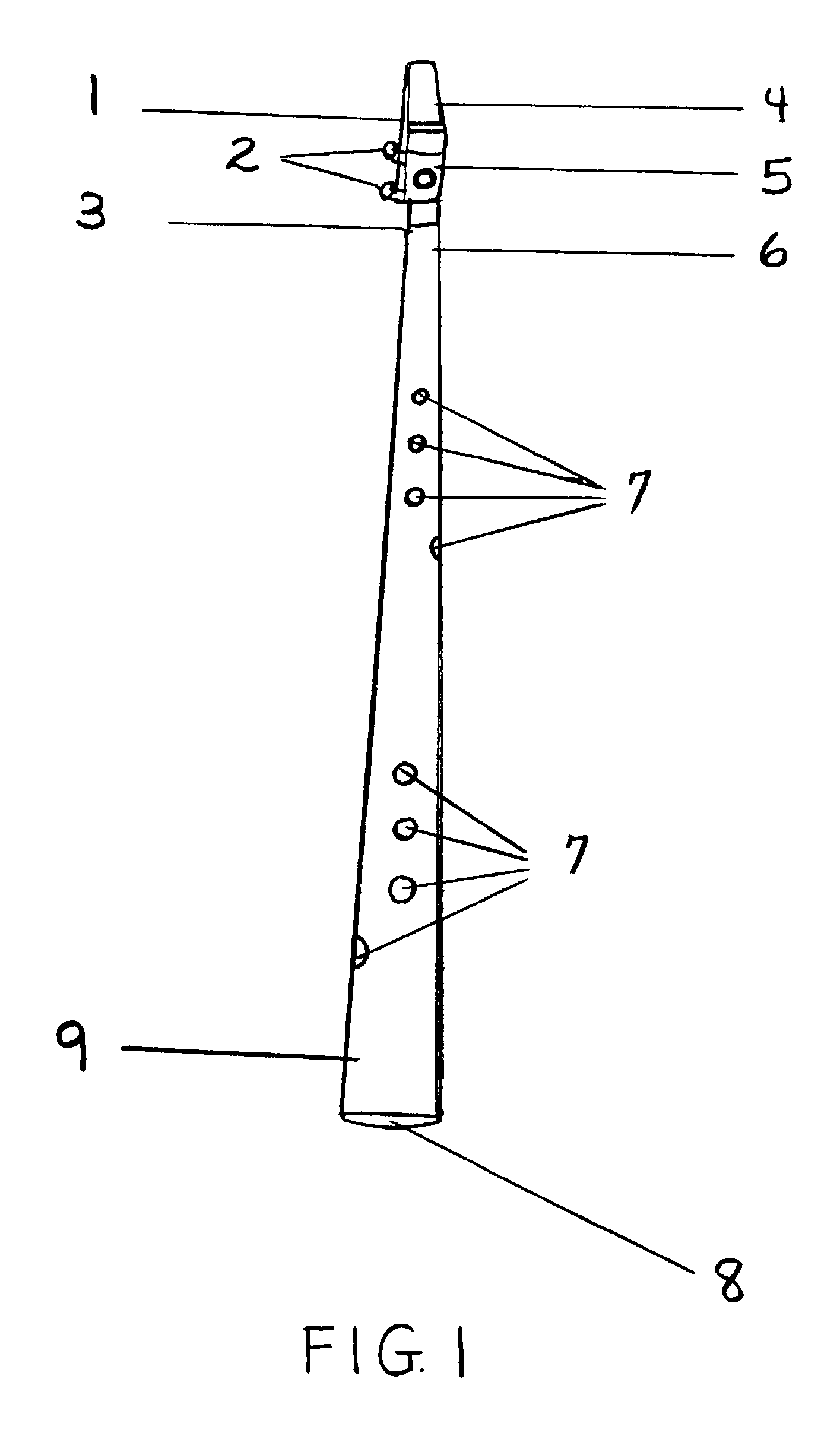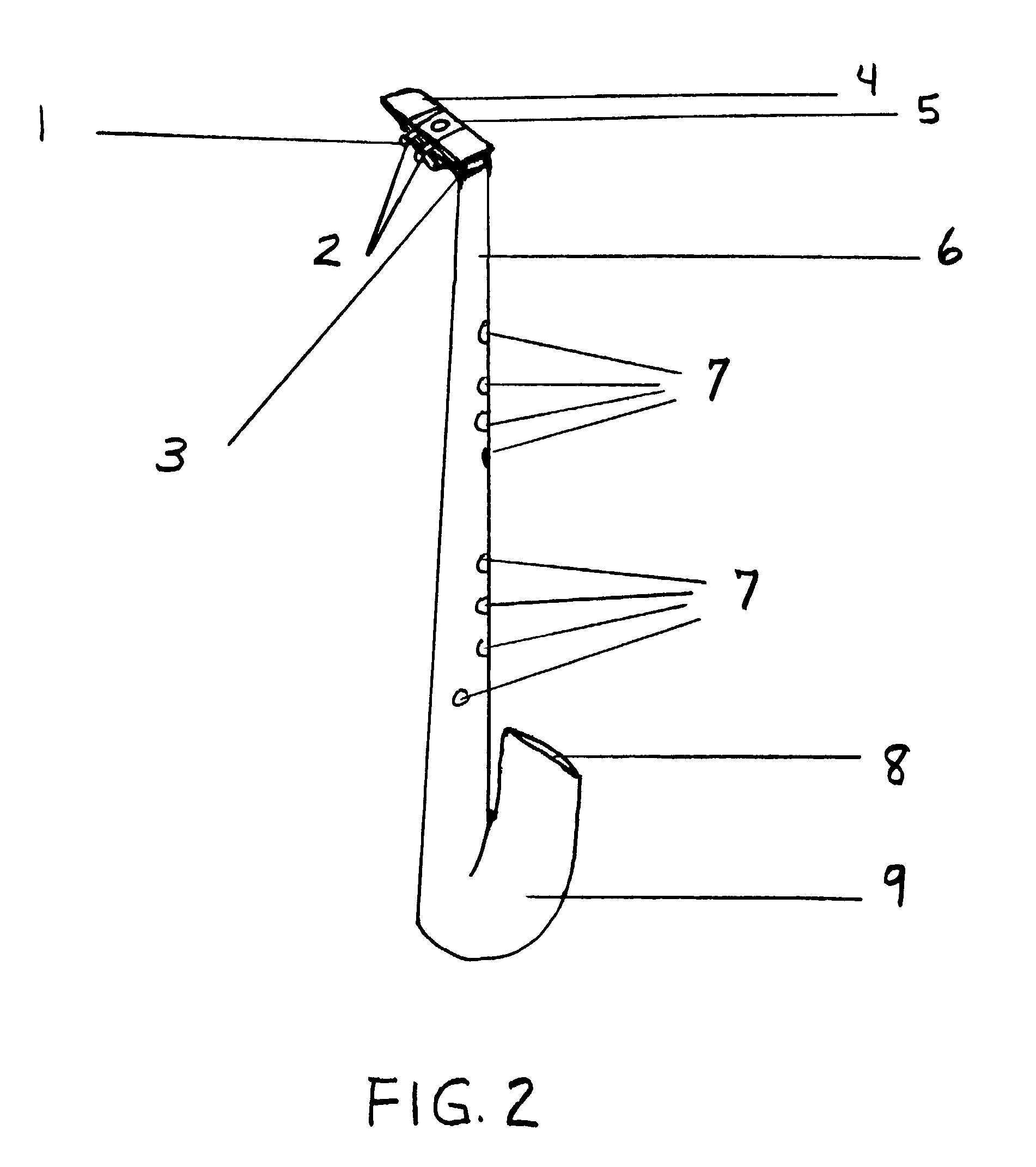Keyless plastic saxophone
- Summary
- Abstract
- Description
- Claims
- Application Information
AI Technical Summary
Problems solved by technology
Method used
Image
Examples
first embodiment
[0016] First Embodiment
[0017] Referring to FIG. 1 of the drawings, the keyless plastic saxophone comprises a single reed 1, secured by thumb screws 2 and a metal or plastic ligature 5, to a standard soprano saxophone mouthpiece 4, which is coupled to a conical body 6, at its narrow end 3. The body of the instrument 6 has along its length a plurality of tone holes 7 (the location of which are calculated to produce a desired musical pitch. The musical pitch is produced when the player vibrates the reed 1 attached to the mouthpiece 4, which creates a standing wave inside the entire length of the instrument, from the mouthpiece 4 to the bell 9. The opening or closing of the tone holes 7 through various finger combinations based on the finger system of the Baroque recorder (or vertical flute) allows the playing of more than a full chromatic scale and a half (or twenty notes). The fundamental tone hole 8, set at a distance from the tip of the mouthpiece 4, determines the key in which the ...
second embodiment
[0018] Second Embodiment
[0019] Referring to FIG. 2 of the drawings, the present invention is depicted in a side-view and with a curved ("J-shaped) body, rather than the straight body illustrated in FIG. 1. With the exception of the curved bell 9, the embodiment of FIG. 2 is identical to the embodiment of FIG. 1, including the reed 1, the thumbscrews 2 for securing the reed 1, to the mouthpiece 4, the ligature which holds the reed to the mouthpiece 4, the neck of the instrument which couples to the mouthpiece 4, the conical body 6, with its plurality of tone holes 7, and the instrument's fundamental tone hole 8. The curved, "J-shaped" body affords the player easier access to the tone hole(s) 7 of the instrument when made in its larger forms as alto or tenor saxophones.
third embodiment
[0020] Third Embodiment
[0021] Turning to FIG. 3, the exterior of the keyless plastic saxophone comprises a conical bell 9, a conical body 6, and cylindrical neck 3 which fits inside the cylindrical chamber of a standard soprano mouthpiece. Since the exterior of the neck 3 is configured to fit snugly inside the rounded end of the mouthpiece 4a, the present invention obviates the need for the cork-sheathed neck of a traditional brass saxophone, thus lowering labor costs without compromising the integrity of the instrument. While the neck 3 is cylindrical on the exterior, it is tapered on the interior 3a. This taper continues through the interior of the body 6a and the bell 9a and ends at the fundamental tone hole 8. The present instrument thus preserves the characteristic saxophone sound generated when its internal taper acts on the sound wave generated by the player's vibration of the single-reed 1, secured to the mouthpiece 4 by a ligature 5 and thumb screws 2.
[0022] Conclusion
[0023...
PUM
 Login to View More
Login to View More Abstract
Description
Claims
Application Information
 Login to View More
Login to View More - R&D
- Intellectual Property
- Life Sciences
- Materials
- Tech Scout
- Unparalleled Data Quality
- Higher Quality Content
- 60% Fewer Hallucinations
Browse by: Latest US Patents, China's latest patents, Technical Efficacy Thesaurus, Application Domain, Technology Topic, Popular Technical Reports.
© 2025 PatSnap. All rights reserved.Legal|Privacy policy|Modern Slavery Act Transparency Statement|Sitemap|About US| Contact US: help@patsnap.com



